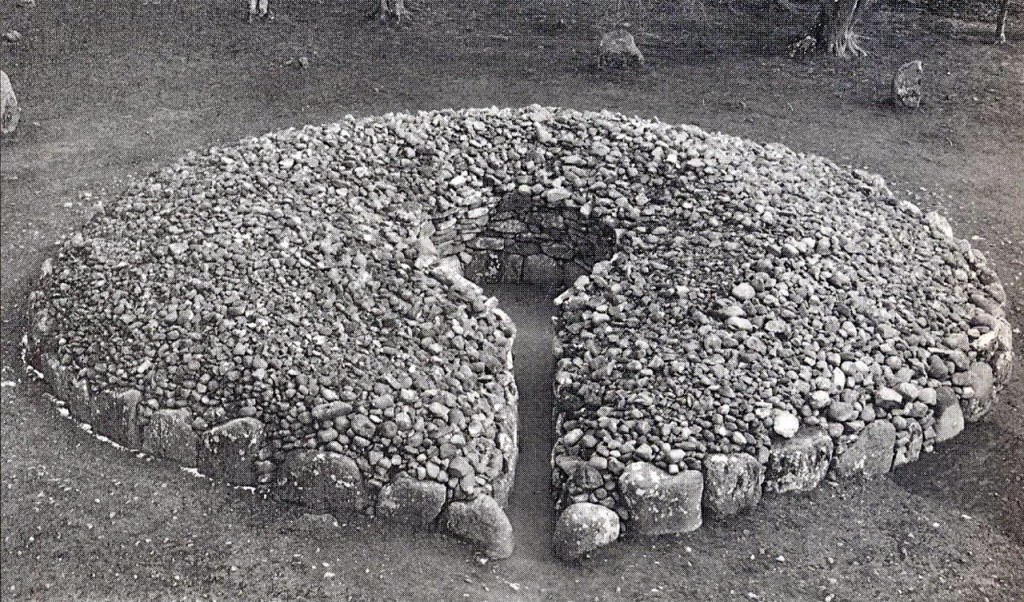For more than 5,000 years, monumental burial cairns have been one of the most stunning human-made features of the Scottish landscape. The cairns have astounded and perplexed people with some claiming that supernatural beings constructed them, whereas others have attributed the structures to Druids, Romans, or Scandinavian pirates. Archaeologists have described more than 450 of these structures with some more than 100 feet long. They generally consist of an internal chamber, where a body or bodies would have been placed, a corbelled vault roof, and a narrow entrance passage, all topped by the cairn, a pile of stones that covered the entire structure.
The cairn below is one of three that make up the Clava Cairns, or Balnauran of Clava, built around 4,000 years ago near what is now Inverness, Scotland. This type of cairn is known as a passage grave. It is 55 feet wide. At one point it was probably roofed. Recent work has shown that this cairn, along with the two nearby ones, were used as celestial markers, most likely noting the mid-winter solstice. Archaeologists believe that a focus on the winter solstice and the time of increasing daylight affirmed and strengthened the concept of rebirth, not just for the natural world but also for the dead. Together these powerful concepts would have united the community, a central theme that I write about in Cairns: Messengers in Stone.

